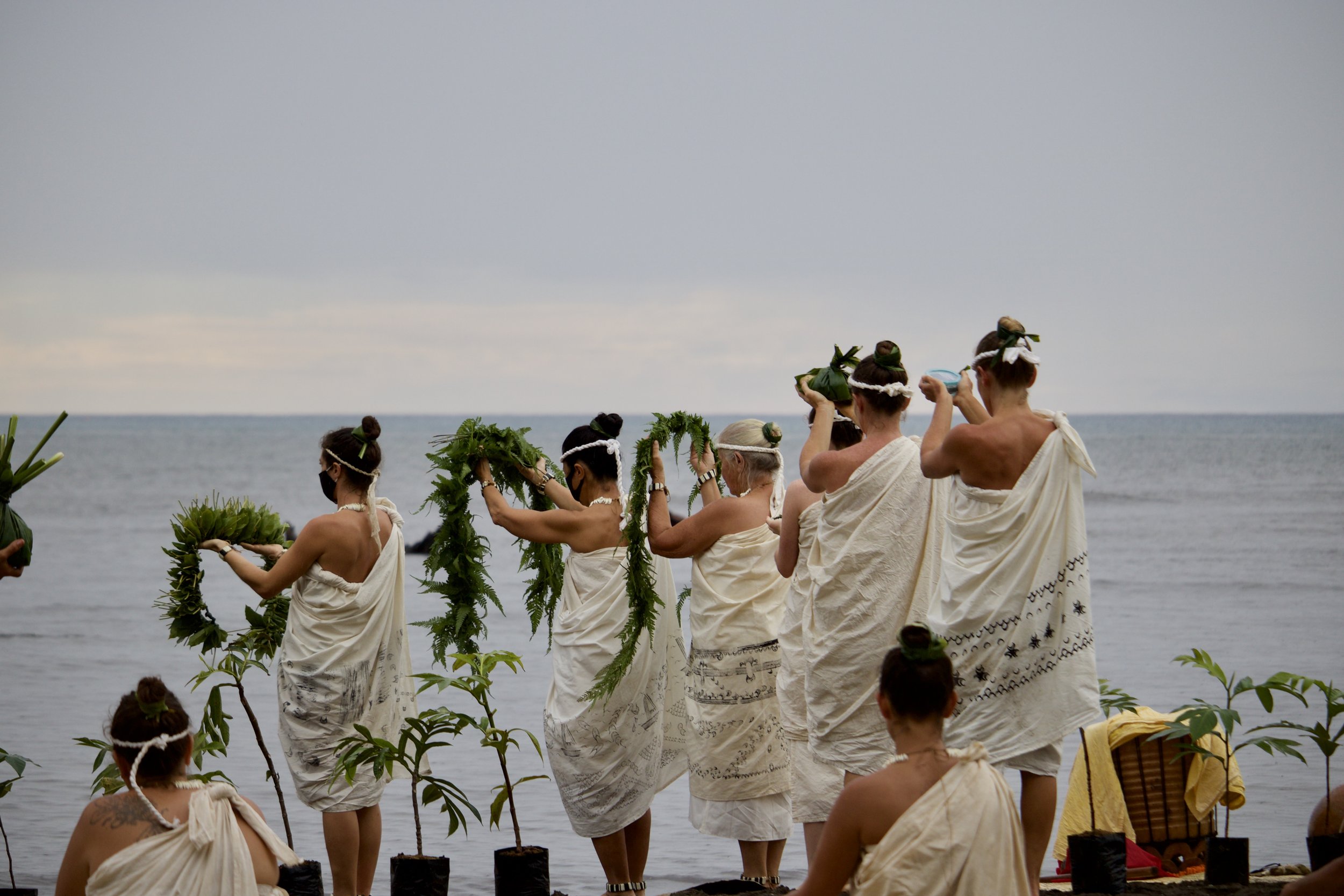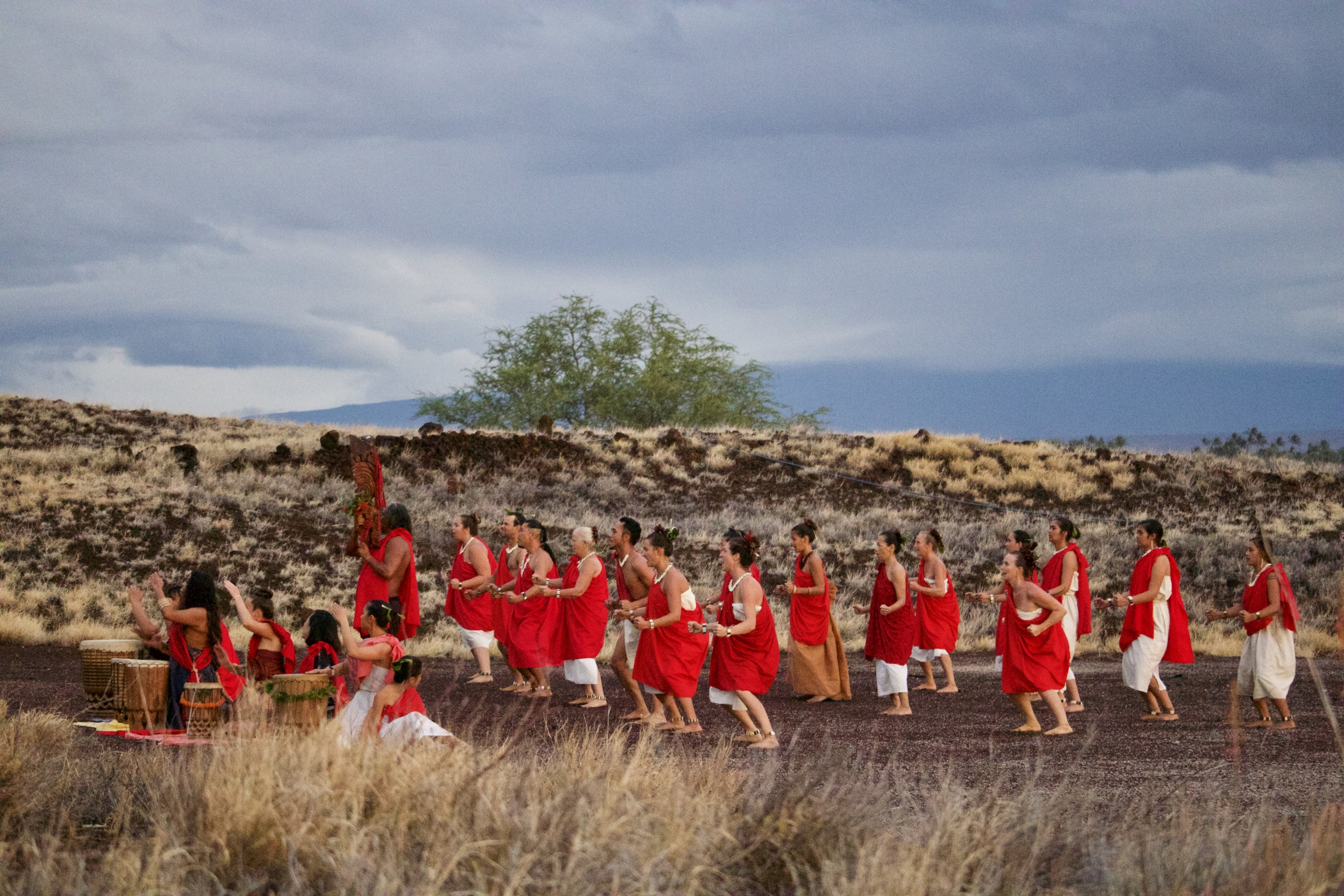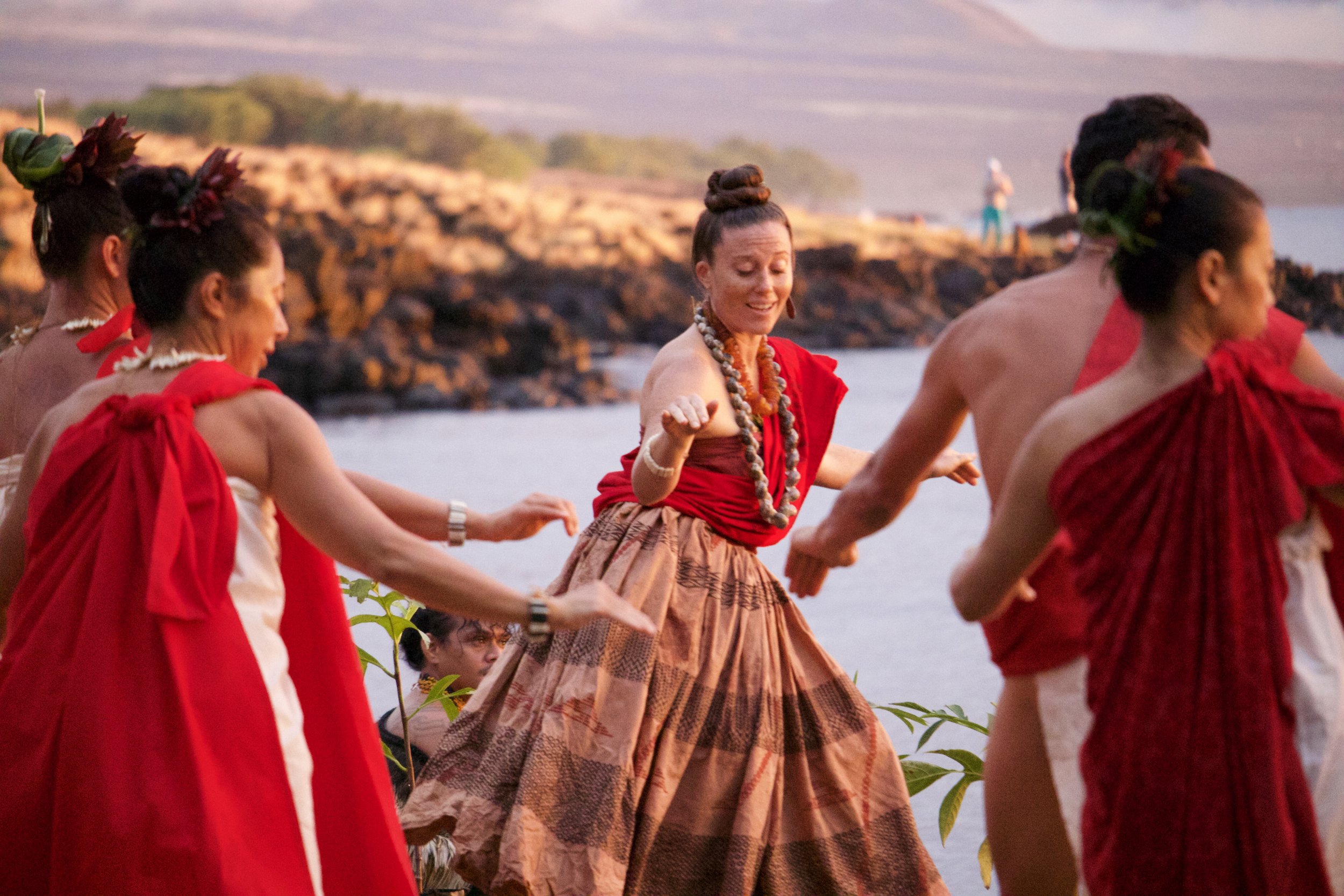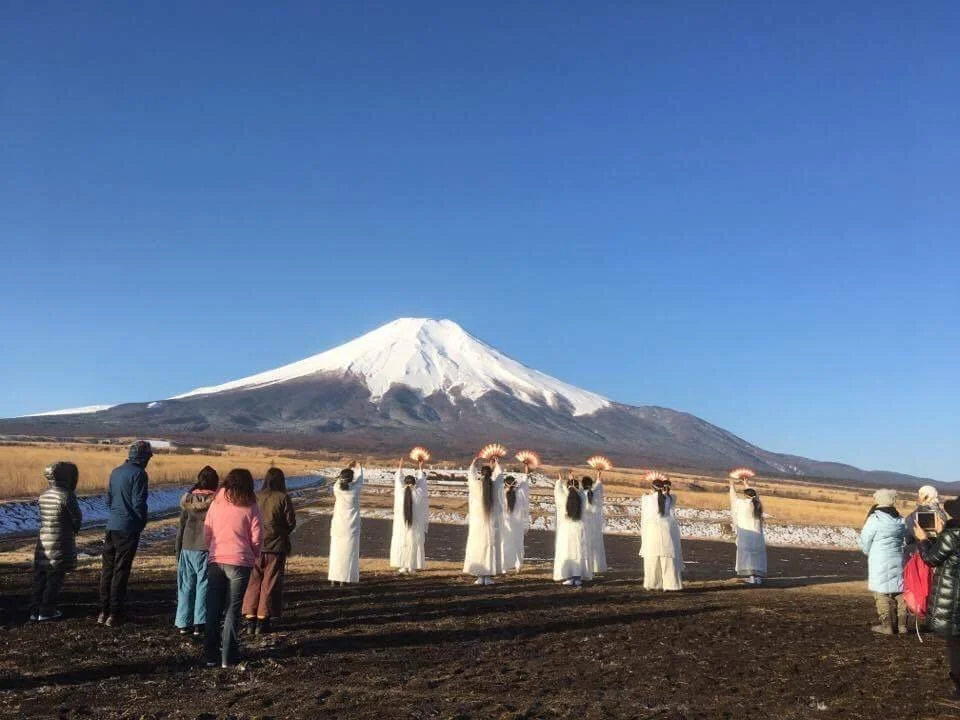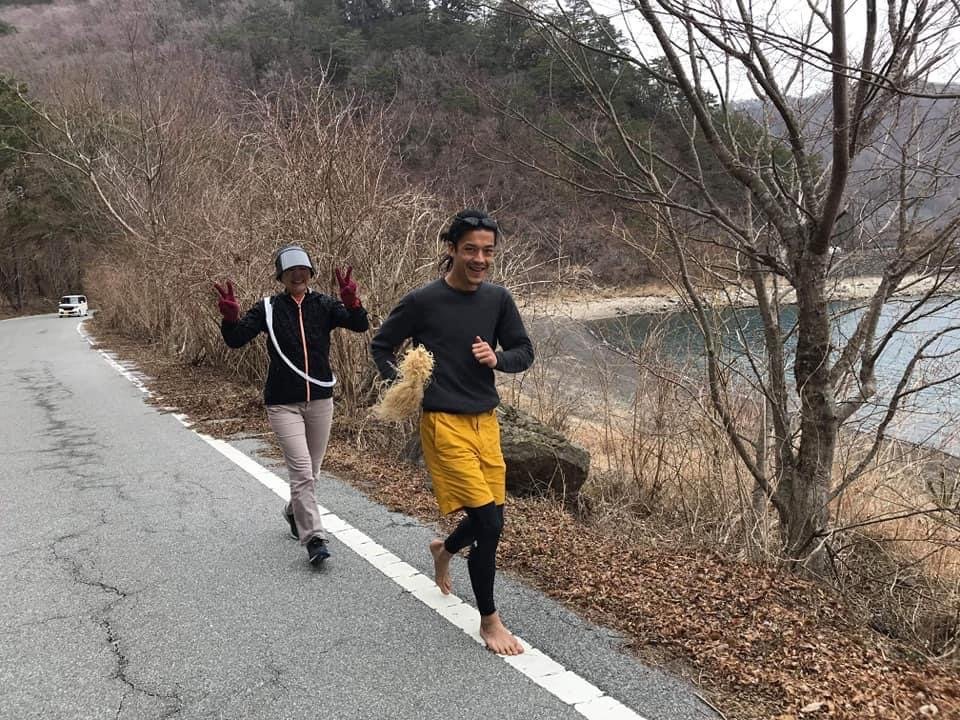
HŌʻĀ PROGRAMS
With our programs as the aulima, or rubbing stick, rooted in ʻIke Hawaiʻi, we create the exact moment of HŌʻĀ: the spark that ignites purpose, drives transformation, and sustains commitment.
KŪKULUKUMUHANA
WAIPIʻO VALLEY
This initiative has provided summer camps that immerse Hawaiʻi's youth in a Maoli environment, fostering values of ʻohana, kuleana, kulia, and alakaʻi.
-
The tradition of Kūkulukumuhana spans nearly 30 years, encompassing various locations including Waipiʻo, Kaʻu, Puna, and Maui. This initiative has provided summer camps that immerse Hawaiʻi's youth in a Maoli environment, fostering values of ʻohana, kuleana, kulia, and alakaʻi. The next generation of Kūkulukumuhana is now being led by those who grew up within the program, transitioning from yesterday’s youth to today’s kumu and mākua.
Under the guidance of Kumu Lanakila Mangauil and Honi Pahio, this evolving program challenges, encourages, and empowers Hawaiʻi's youth to embrace the kuleana of pono leadership within their communities. Participants are inspired to become architects and designers of Hawaiʻi’s future. The summit consists of a variety of hands-on individual and group projects, in-depth conversations, guided discussions, problem-solving activities, and skill development. Guests ranging from keiki to kūpuna share their knowledge and facilitate a range of activities.
Set against the ancient valley walls of Waipiʻo, the waters of Wailoa, and the fields of Hāloa, the ʻāina serves as our kumu. Participants engage in direct service projects, including hana noʻeau, oli, mele, hula, ʻai pono cooking, construction, scientific research, and traditional agriculture and gathering practices. This holistic environment challenges our youth to rise beyond their norms and expectations.
HULIKALIMAILALO
HŌʻĀ FARM, HONOKAʻA
In this program we manage a 70 acres for the betterment of the Hāmākua community through developing a living, learning space of healthy diversified sustainable agriculture and native forest restoration.
-
Covid revealed the unreliability of our food systems. Bearing witness to hundreds of Hāmākua families struggling with access to food, Lanakila looked to address not only the immediate need but to move towards ensuring a stronger food source for our communities. Leveraging our partnership with Hāmākua Harvest, we looked to steward the pasture lands and convert it into a large scale community resource. To work towards creating a food securing resource for Hāmākua families
In this program we manage 70 acre lease property for the betterment of the Hāmākua community through developing a living, learning space of healthy diversified sustainable agriculture and native forest restoration. Guided by traditional Hawaiian values and practices, we work towards transforming old sugarcane/pasture lands into sustainable community resource divers in healthy AG practices.
The initiative creates a robust landscape of healthy trees and crops that supports community food needs while hosting and modeling best practices to shift agriculture in Hawaiʻi toward traditional and healthier environmental practices. We promote and encourage the cultivation of traditional, healthy local crops and establish healthy outcrops of native forest stands that serve as windbreaks, provide habitats for native species, and create a seed bank for native forest rehabilitation in the Hāmākua Moku. Additionally, we establish community organizations and family plots to ensure that the community has access to ʻāina for cultivation. Our efforts also support focal crops that are significant for culture and the arts, such as wauke for kapa making, lauhala for weaving, indigo for dyeing, and various medicinal plants for lāʻau lapaʻau.
CEREMONIAL
PRACTICE
WEHE KŪ
PELEKĀNE / PUʻUKOHOLĀ
Wehe Kū is an annual ceremony that marks the transition from the Makahiki season (time of Lono) into Kau season (time of Kū). Set against the backdrop of Puʻukohola, this ceremony invokes the imperative to "kū"—to rise and confront challenges.
-
Participants are encouraged to plant intentions and "ku mai"—to elevate those aspirations into action. The second day of the ceremony features a communal planting event in Honokaʻa, where we plant consecrated trees, reinforcing the community's commitment to stewardship of the land.
The concept of Kū extends beyond warfare; it encompasses essential societal structures such as politics, governance, agriculture, and fishing. As a guardian of kapu (sacred laws), Kū embodies the responsibilities of nation-building and communal defense. Historically, the figure of Kū has been narrowly defined, often linked primarily to war, particularly through the lens of Kūkaʻilimoku, invoked by Kamehameha The Great to unify the Hawaiian Islands. This limited portrayal has been reinforced by colonial narratives that undermine the broader significance of Kū as a symbol of empowerment, proactive leadership, and community organization.
Wehe Kū seeks to reclaim and celebrate the multifaceted nature of Kū, fostering a deeper understanding of our cultural heritage while empowering individuals and communities to engage in meaningful action for the future. This program not only honors tradition but also inspires a collective commitment to social and environmental responsibility.
ʻAHA PULE ʻĀINA HOLO
HAWAIʻI ISLAND
This 6-day contemporary community ceremony launched in 2014 is most commonly refered to as the “Lono Run”. Guided by Kumu Hawaiʻi and ʻIke Kūpuna, a four day relay run around the whole of Hawaiʻi island with hundreds coming out comes after two days of ceremony.
-
Guided by Kumu Hawaiʻi and ʻIke Kūpuna, two days from the highest point of Hawaiʻi, the center point of the island and a community feast and prayers which then launch a four day relay run around the whole of Hawaiʻi island with hundreds coming out in participation!
To usher in the Makahiki season, aliʻi and kahuna traditionally carried the Lonomakua staff around the island in a clockwise direction, stopping in each district to collect tribute, cleanse the land, and assess the health of both the land and its people. Although the modern ceremonial run incorporates many elements from this ancient tradition, Lanakila emphasizes that this six day relay around the circumference of Hawaiʻi island represents a new ceremony, distinct from a mere re-creation or replacement of the original.
The symbolism of Makahiki is deeply woven into the run: each footfall symbolizes a ku‘i that awakens and stimulates the ʻaina. Prior to the run, a gathering of Hawaiian practitioners convenes on Maunakea, performing ceremonies at Hale o Kū Kia‘i Mauna (House of the Maunakea Guardians) and at the mountain's summit. This ceremonial preparation culminates in the sanctification of the Lono ke Kukini Pule staff at Lake Waiau, where it is officially adorned. The journey to the island's piko concludes with prayers at Pu‘u Kohe, a cinder cone situated in the island's center, overlooking the Pōhakuloa Training Area.
Each district is represented by a coordinator who organizes the runners, facilitating the relay handoff of the Lono staff throughout their respective areas. A dedicated core group of long-distance runners accompanies the staff each day. Additionally, the customs of each district dictate how runners and guests are greeted and cared for, encompassing food, lodging, and ceremonial protocols.
INTERNATIONAL
CEREMONY
TATSUKI RUN
TATSUKI, JAPAN
In 2017, a four-day ceremonial run around Japan's sacred Mt. Fuji was established, an event that Hawaiian delegates now attend annually.
-
This profound experience stops at significant shrines and temples along the route, where Tasuki runners carry a Shinto staff adorned with bells and vibrant, multi-colored ribbons symbolizing the peoples of the world. The event is a testament to the enduring spiritual connections that cross boundaries, reinforcing an international relationship rooted in shared respect for sacred lands and collective histories.
This ceremonial journey, inspired by HŌʻĀʻs ʻAha Holo, reflects the essence of honoring ancestral pathways while uniting participants through ceremony. Inspired by their experiences with Native Hawaiians and Californian tribal members, Japanese students returned to establish this ceremonial run, dedicating it to the sacred Mt. Fuji and cultivating a space for ongoing learning and cultural exchange.
Delegations from Hawaiʻi and California continue to journey to Mt. Fuji each year, creating a cross-cultural exchange where each group contributes through ceremony and site-specific workshops that emphasize mutual learning, reverence for natural landscapes, and the strengthening of ancestral bonds. In this space, young people from each culture find inspiration in one another’s dedication and passion, laying the foundation for a legacy of mutual support and respect that will carry into the future. This relationship with Mt. Fuji deepens the commitment to cultural exchange and supports the global Indigenous movement toward honoring sacred spaces and preserving the ancestral wisdom that binds us across nations.
PIT RIVER ANCESTRAL RUN
PIT RIVER FIRST NATION
In an important exchange of culture, people of the Pit River Nation community join the Aha Pule ‘Āina Holo on Hawai‘i Island, while HŌʻĀ participates in their Ancestral Run in Northern California.
-
These exchanges deepen bonds between the communities, uniting them in honoring their lands and ancestral wisdom. Each gathering stands as a powerful testament to the resilience and cultural continuity that connect Indigenous peoples across oceans and generations.
The bond between Hawai‘i and the Pit River Nation goes beyond the Ancestral Run, drawing from stories shared over generations. Pit River elders recount that Hawaiians once traveled by canoe to their lands to visit Mt. Shasta, teaching a hula that is still preserved within the community. This exchange of cultural practices has evolved into today’s ceremonial runs, underscoring mutual respect and the preservation of sacred traditions.
The original run was Initiated around 1992 by Radley Davis and members of the Pit River community, the Ancestral Run aims to restore community well-being, resilience, and cultural pride in the face of health and social challenges. The Pit River Nation, which includes eleven autonomous bands such as Ajumawi, Atsugewi, and Atwamsini, has a deep-rooted connection to the “100-mile square” area in Northern California, a landscape central to their heritage.
ALOHA FESTIWAL POLSKA
WARSZAWA, POLAND
This two week long event was created to encourage a rediscovery of indigenous Slavic traditions with an official partnership was made between HŌʻĀ and The Asian and Pacific Museum of Warszawa in 2015.
-
This two week long event was created to encourage a rediscovery of indigenous Slavic traditions with an official partnership was made between HŌʻĀ and The Asian and Pacific Museum of Warszawa in 2015.
Delegations from Hawaiʻi travel to Poland and engage in lectures and demonstrations and festivals.
Wsłuchujemy się w echa etnicznych głosów i czerpiemy inspirację z ze źródeł na odległych wyspach Pacyfiku. Dzielą nas tysiące kilometrów, ale łączy ta sama radość życia i więź z matką naturą – mówi Joanna Mazurek, Fundacja Po Nitce Do Kłębka, która jest organizatorem wydarzenia. Współorganizatorem jest Muzeum Azji i Pacyfiku, mieszczące się przy ul. Solec 24. - Połączyliśmy siły, abyście mogli dotknąć etnicznej kultury i sztuki Hawajów. Odetchnąć klimatem gorącym i wilgotnym. Zakochać się w muzyce, tańcu, sztuce i opowieściach z odległych archipelagów, i tak jak my, ulec magii bezkresnego, błękitnego Pacyfiku – dodaje Magdalena Samojlik, Fundacja Po Nitce Do Kłębka.
Location: Warszawa, Poland
ONLINE
COURSES
HAʻIALONO
ONLINE w/ E ALA EA
HAʻIALONO is a five-part workshop created in collaboration with Kaleinohea Clegghorn of E ALA EA, that equips participants with chants and mana (spiritual energy) that empower them to navigate seasonal changes meaningfully.
-
This workshop delves into the foundational aspects of chant and language, aiming to cultivate a deeper understanding of Hawaiian culture and its relevance in today's context. The teaching methods employed are intentionally designed to create an inclusive space for individuals who may have felt marginalized, inviting their active participation.
Focusing on the application of chant as a means. Grounded in the principles associated with Lono, this course uses the application of chant as a means to explore the interconnectedness between humanity and the environment. It emphasizes the significance of reflection and internal balance, encouraging participants to engage deeply with their emotions, insights, and cultural identity.
KU MAI
ONLINE w/ E ALA EA
KU MAI is a five-course workshop series created in collaboration with Kaleinohea Clegghorn of E ALA EA, where the practice of chant is utilized to construct a functional and relevant relationship to the elements of Ku.
-
While the popular narrative often associates Kū solely with warfare—this course seeks to reclaim and redefine the multifaceted nature of Kū by addressing its historical context and significance in empowering individuals and communities.
This workshop delves into the foundational aspects of chant and language, aiming to cultivate a deeper understanding of Hawaiian culture and its relevance in today's context. The teaching methods employed are intentionally designed to create an inclusive space for individuals who may have felt marginalized, inviting their active participation.
NĀ PAPA
HŌʻĀ
PAPA HULA
WAIMEA HAWAIʻI + ONLINE
A comprehensive exploration of hula, delving into its rich historical, cultural, and spiritual significance.
-
This immersive course is suitable for participants of all skill levels, from beginners to experienced dancers, and is grounded in the traditions of Kuanunu. Throughout the 12 classes, students will learn a diverse repertoire, gaining insight into the meanings and narratives conveyed through movement.
Participants will receive detailed instruction on traditional techniques and expressions, allowing them to develop a deeper appreciation for the intricacies of hula as both an art form and a means of cultural expression. Engaging assignments and activities will facilitate critical reflection on the dancer's relationship to hula and its role in Hawaiian cultural identity. The course will culminate a Hoʻike and ʻAha, providing an opportunity for participants to showcase their skills and celebrate their artistic and personal growth.
PAPA OLI
WAIMEA HAWAIʻI + ONLINE
An in-depth exploration of Hawaiian chant (oli), fostering a direct and immersive engagement with this vital aspect of Hawaiian cultural heritage.
-
Throughout the course, participants will be guided through a carefully curated repertoire of chants, gaining insights into their historical contexts, meanings, and practical applications within Hawaiian society.
Instruction will focus on traditional vocal techniques, including breath control, articulation, and phrasing, essential for authentic chant performance. Participants will engage in a variety of assignments and activities designed to deepen their understanding of the relationship between the chant and the chanter, emphasizing the spiritual and cultural significance of oli in Hawaiian traditions.
The course will culminate in a Hoʻike and ʻAha, allowing students to showcase their learned skills and reflect on their journey through chant. By the conclusion of PAPA OLI, participants will have developed not only technical proficiency but also a richer appreciation of the role of oli in preserving and perpetuating Hawaiian culture.
PAPA ʻŌLELO HAWAIʻI
WAIMEA HAWAIʻI + ONLINE
An introductory course designed to immerse participants in the vibrant rhythms and nuances of ʻŌlelo Hawaiʻi, the Hawaiian language.
-
This course emphasizes the development of conversational skills and pronunciation within a dynamic and interactive learning environment.
Participants will engage in meaningful dialogue through the practice of Walaau Kanaka, facilitating a deep connection to the language while simultaneously enhancing their understanding of Hawaiian culture. The curriculum will incorporate a variety of immersive activities that promote active participation and cultural awareness, ensuring that learners not only acquire language skills but also appreciate the historical and social contexts in which ʻŌlelo Hawaiʻi is situated.
By the conclusion of the course, participants will have gained foundational proficiency in conversational Hawaiian, along with a greater appreciation for the cultural significance embedded within the language.

























